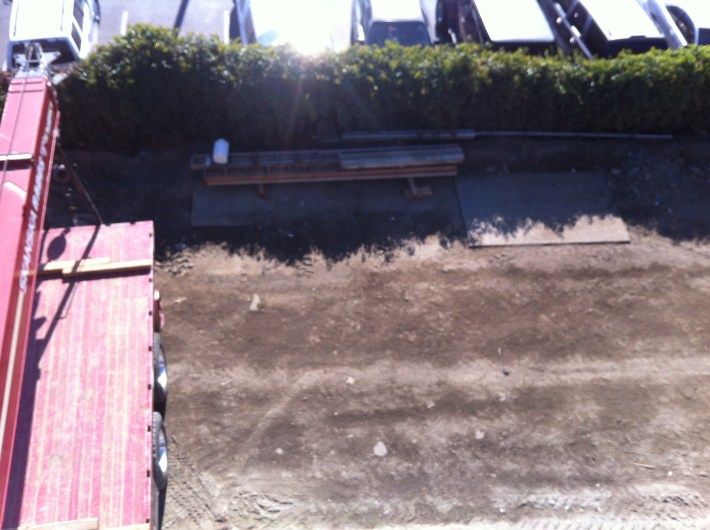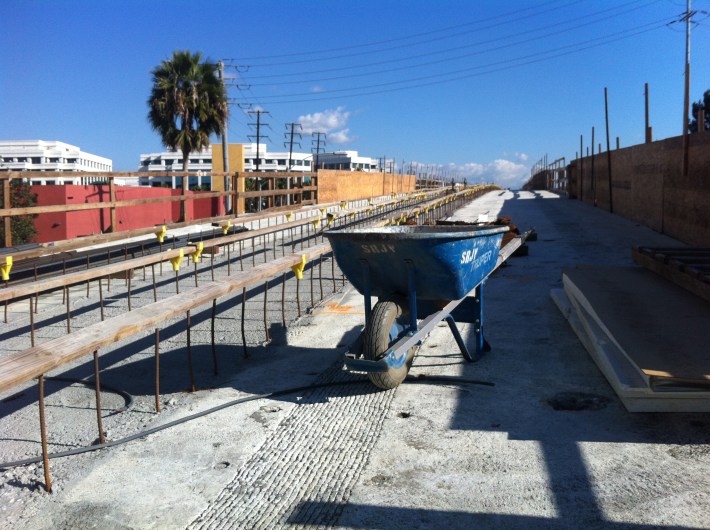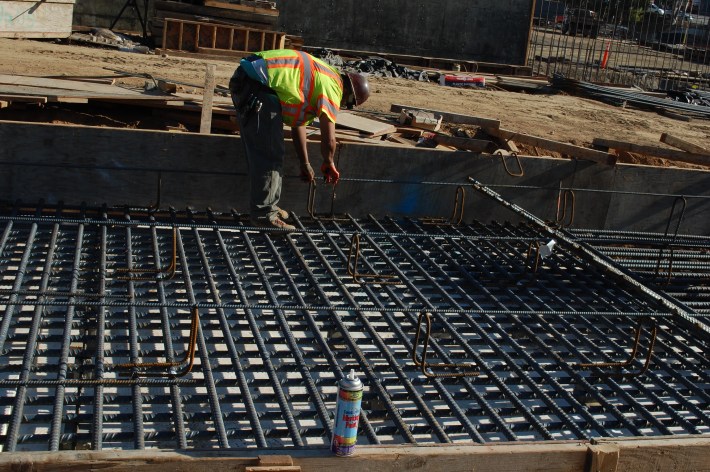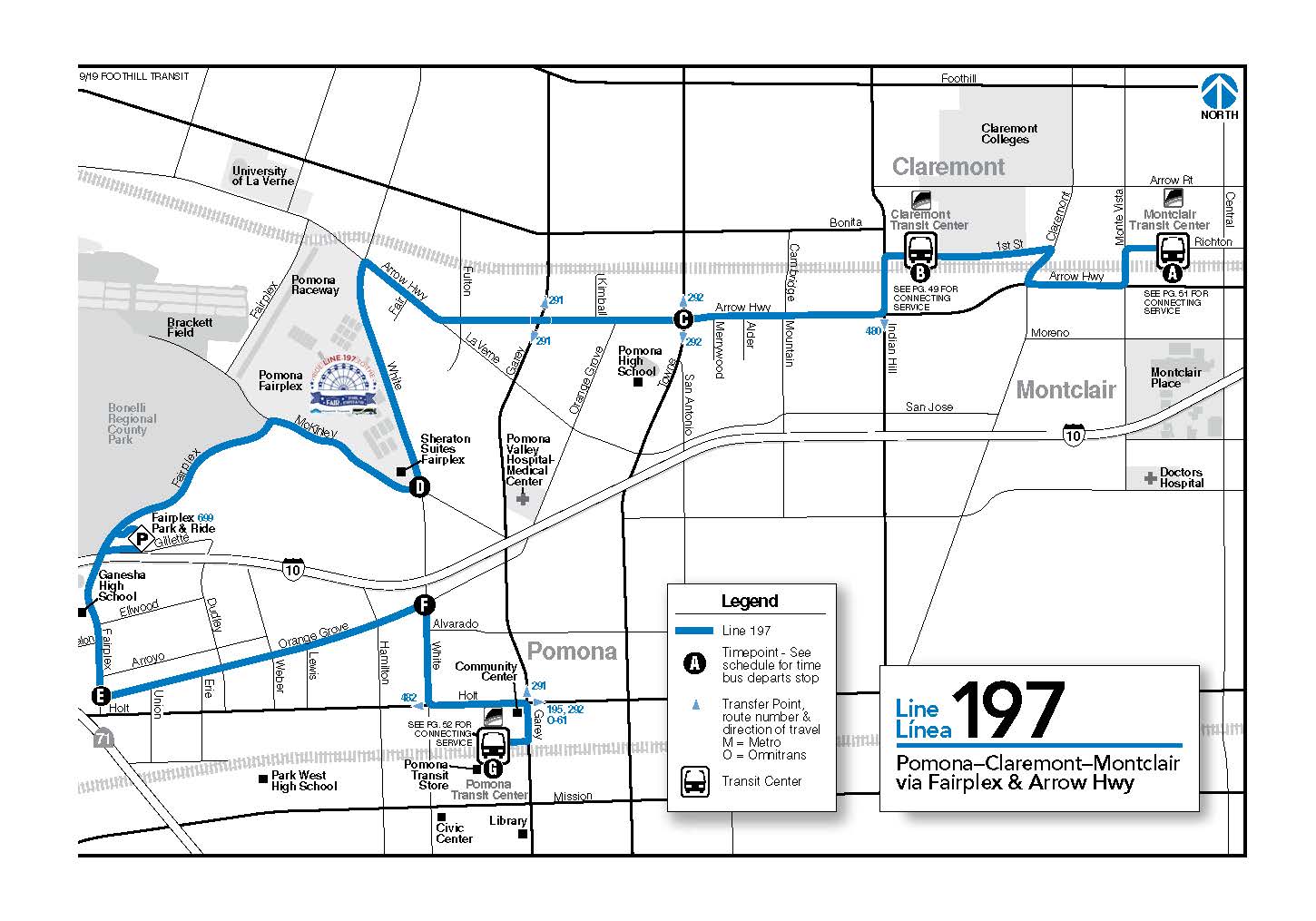A Photo Essay of a Tour of Expo Phase II
10:04 AM PST on December 16, 2013
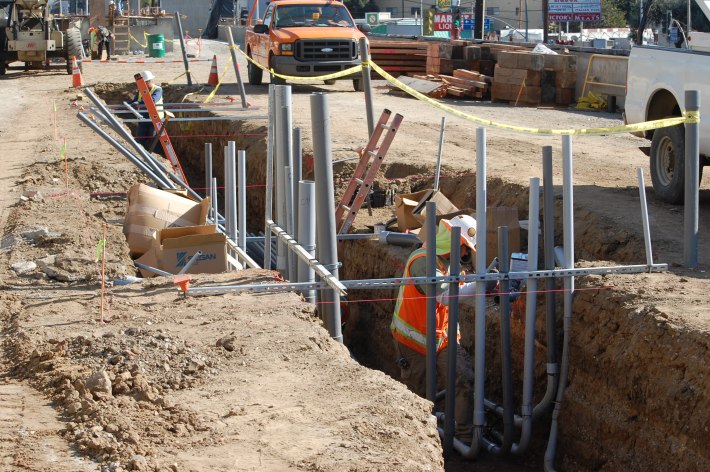
When Stephen Villavaso, known to many Streetsblog readers as the volunteer traffic engineer who makes CicLAvia possible, asked me if I would like to ride along on a tour of Expo Phase II construction, I jumped at the chance. Villavaso is also one of the engineers working for Skanska-Rados Joint Venture - the design-build contractor of the Expo Line Phase II. Villavaso manages the design for the construction project which involves regularly driving up and down the future light rail and bike path talking to workers, monitoring construction, and just keeping abreast of everything that’s happening on site.
For those just joining us, the Expo Line is a 15.2 mile, $2.4 billion Exposition Light Rail Line that will connect Downtown Los Angeles to Santa Monica via Culver City. Construction on Phase I of the line, from downtown Los Angeles to Culver City, began in 2006 and opened to the public in 2012. Phase II of the project, which will extend the line out to Santa Monica, is now underway. Construction is expected to be completed by 2015 with revenue operations beginning the following year. The Expo Line is and will be run by Metro.
While I've been covering the Expo Line since before Streetbslog launched in 2008, it seems there is always something new to learn about it. On this day, I learned something that should seem obvious...building a light rail line is hard. I mean really hard.
I unexpectedly ended up discussing how to move power lines, how to protect existing underground utilities, how many different types of concrete are needed, how to protect workers during excavation, that maybe some federal safety requirements are a little over board, and a lot of other things.
But the good news is that progress is definitely happening. Even if it's sometimes hard to see.
Where the Expo Line runs under an existing bridge just west of Motor Avenue, Villavaso explained that the last time he was there, a large trench was in the ground. This time, the trench had been filled and there was no sign that a lot of work had happened in the area. "This is really exciting," he said gesturing to what now appeared to be just a dirt road. The last time he had done one of these tours was about a month and a half earlier, when he had been accompanied by Nat Gale from the Mayor's Office.
We made six stops on our tour, starting at the Cloverfield/Olympic Bridge, going back to the start of Phase II at Venice Blvd., and stops at Palms and Motor before heading back into Santa Monica. In Santa Monica, we stopped at the Bundy/Centinela Station and the terminus (or beginning pending your point of view) at Downtown Santa Monica.
Our thanks to Stephen Villavaso for leading me around and answering my questions. My wife, who is also an engineer, was laughing at me while I was listening to the audio to write this story, so it must have taken some real self-control for Stephen to keep a straight face.
A full essay, with more of photographs from the project sites, is available after the jump.
Instead of going chronologically as how we spent the day, we'll organize the essay from east to west, starting at the terminus of Expo Phase I.
Those familiar with Venice Boulevard know that the bridge over the Boulevard is well underway. But from the side, it's hard to tell exactly how far along the bridge is. For the record, it is already completed over Venice Boulevard.

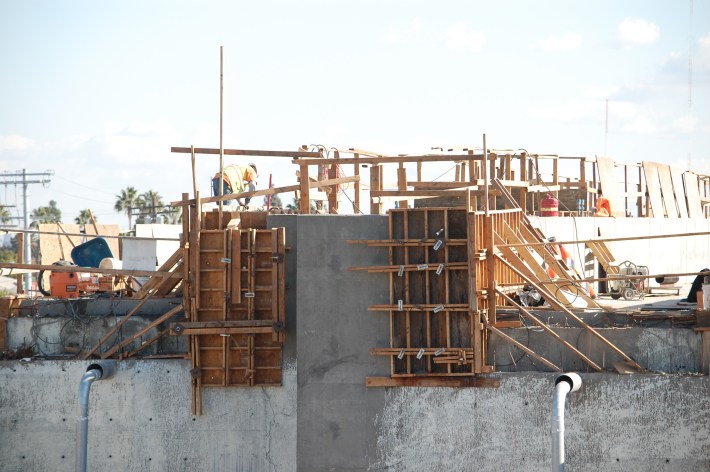
From the Venice crossing, we headed over to the future Palms Station.


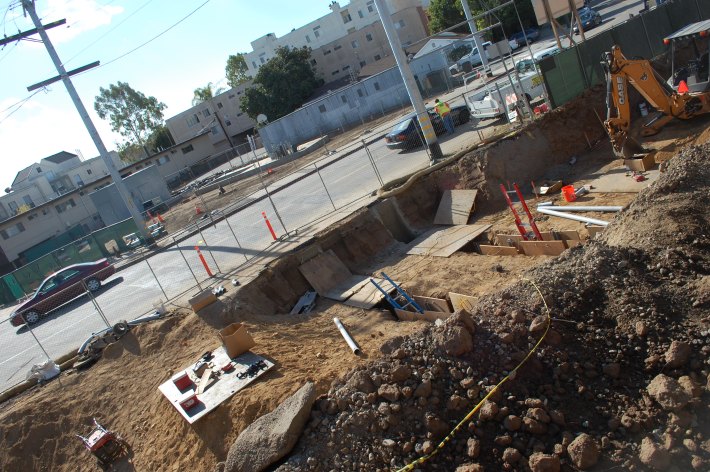
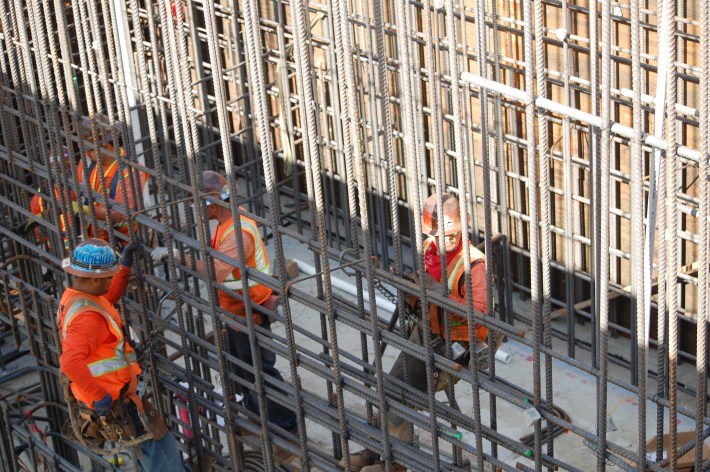
From Palms, we headed to Motor Avenue. Instead of looking at a station, we saw where tracks will be laid and where a lot of rebar has been installed but the concrete pour has not yet occurred. We also had an interesting conversation about electrical, paint removal and some other local issues.
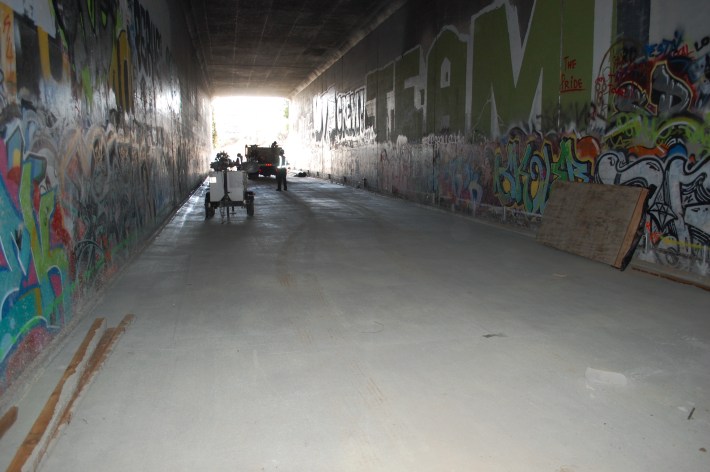


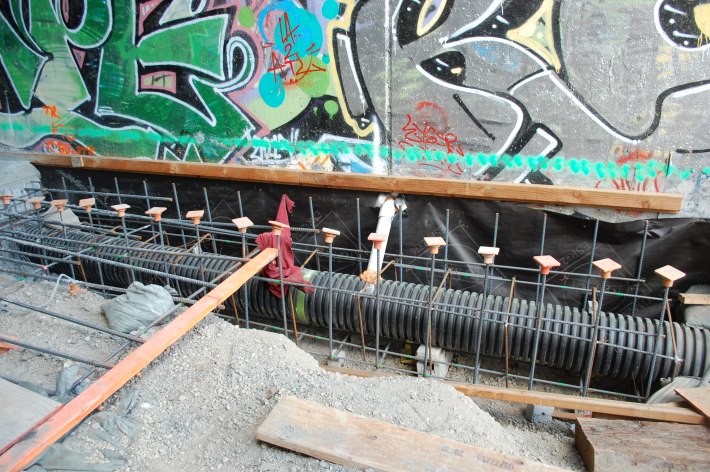
From Motor Avenue, we headed over to Overland where the team was constructing runoff options both below and above ground.
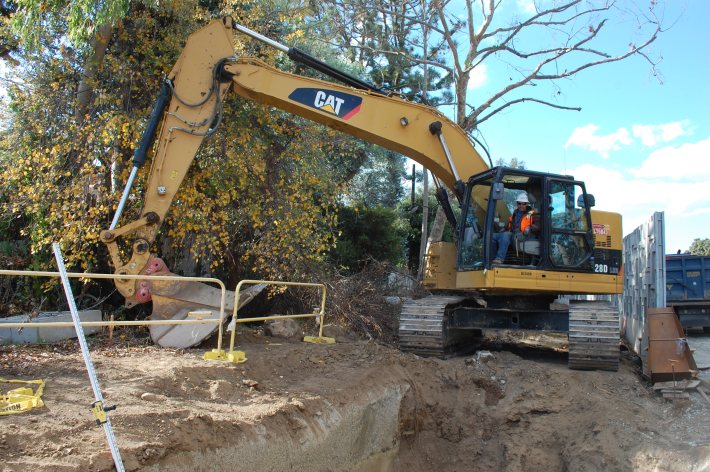
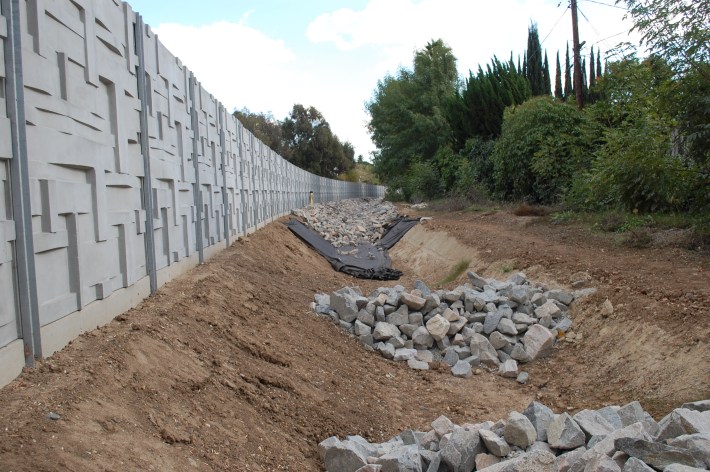
Next, we made an unscheduled stop at the construction near Sawtelle Avenue. A quick trip up a very well inspected ladder yielded some interesting views.
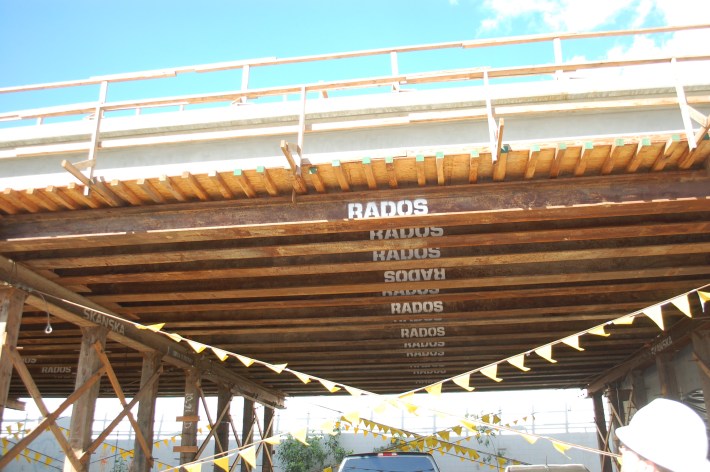


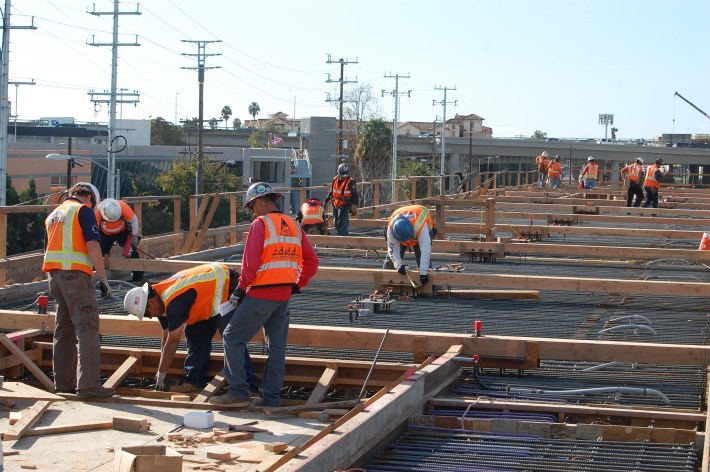
From there, our next stop was the end of the line in Santa Monica. But for the purposes of this article, our next stop was near the Cloverfield/Olympic Boulevard crossing (which chronologically was where Villavaso and I first met.)
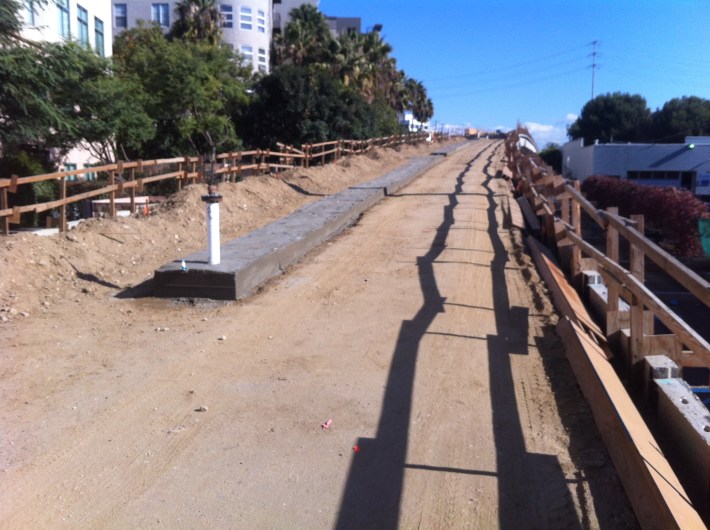
Our last stop was the future Downtown Santa Monica Station, where not just a station is being built, but the team is working diligently to protect the communications vaults for Verizon and power vaults for Con Edison.

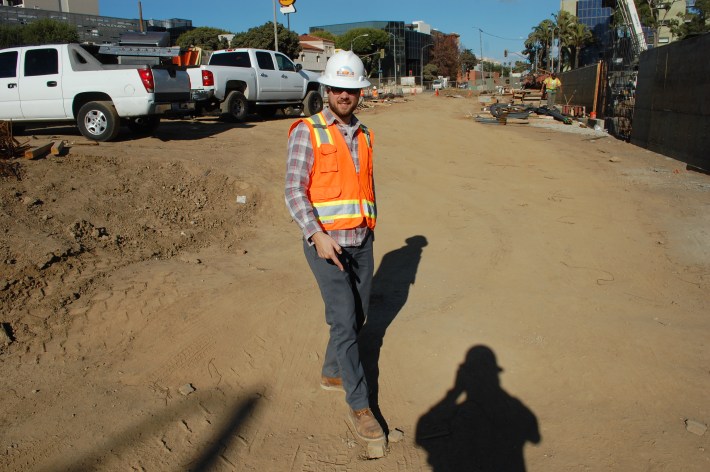
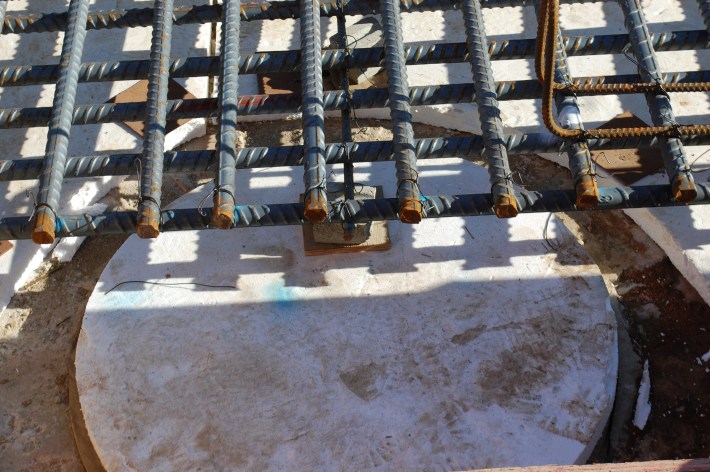
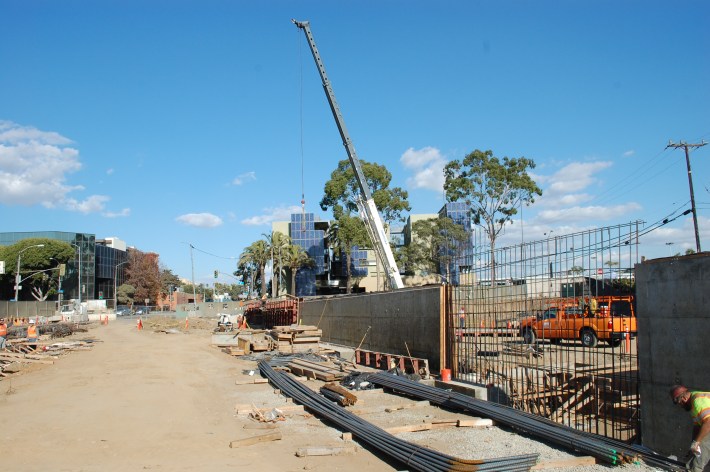
Obviously, almost everyone on the Westside and Santa Monica is looking forward to Expo being completed as soon as humanly possible. But somehow after the tour, I wouldn't be too upset at a delay (provided it weren't too long.) This project, as any transit project, is a mammoth undertaking. With any project this size, there are things that can go wrong, but after the tour I'm a believer that the team that Skanska-Rados put together, including the electricians, construction crews, STEINY, and everyone involved in the project can make a plan for whatever comes up and deliver a safe and structurally sound project that will transform the west side of Los Angeles.
Stay in touch
Sign up for our free newsletter
More from Streetsblog Los Angeles
No, L.A. City Does Not Always Add Required ADA Ramps During Resurfacing, But They Should
StreetsLA GM Keith Mozee "Any time we do street resurfacing, it is considered an alteration, which requires ADA ramps to be installed."
LAPD Was Crossing Against Red Light in Crash that Killed Pedestrian and Injured Six in Hollywood
The department says the officers had turned on their lights and sirens just before crossing, but won't say why they did so.

